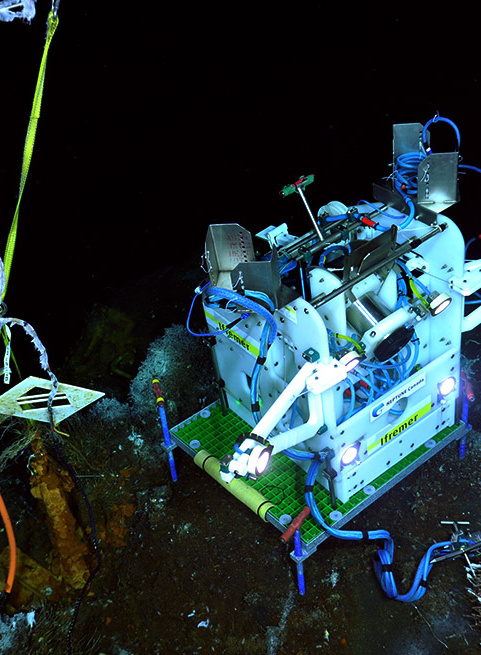Since 2012, with the expansion of the ABS Capacity Development Initiative’s activities to the Pacific and Caribbean regions, marine bioprospecting and related ABS mechanisms increased in importance for our work.
The underwater world offers a vast diversity in genetic resources. Some are already being utilised for pharmaceutical, cosmetic, nutraceuticals or biotechnological purposes.
For instance, the properties of the venom of the widely distributed predatory sea snail Conus magus led to the development of a synthetical conotoxin called ziconotide. It is reported to be 1,000 times more powerful than morphine.
Patented in 1998 by a US-based pharmaceutical company, ziconotide was approved under the name Prialt by the US Food and Drug Administration in December 2004. In February 2005, the European Union approved ziconotide for treatment of chronic and intractable pain caused by AIDS, cancer, neurological disorders and other maladies. As of 2020, at least 15 “marine drugs”, predominantly against cancer, have been approved.
The cosmetic industry uses many marine organisms and their derivatives. The Swiss company Mibelle Biochemistry sells Helioguard 365 / Noriguard nc as UV-filter for sun creams to cosmetics companies, containing a compound from the red algae Porphyra umbilica collected in France.
The French company Unipex Innovations developed cosmetic ingredients from microbial mats, called Kopara, collected on Moorea Island, French Polynesia. Kopara is a gelatinous sediment formed by benthic microbial communities, dominated by cyanobacteria. It contains many biomolecules which bear potential for various industrial applications.
There is undoubtedly great ABS potential in marine genetic resources, especially for the so-called Small Island Developing States (SIDS) which hold substantial marine areas under their national jurisdiction. Actually, 36% of the world’s ocean area is under national control, including large stretches of the deep sea, many hydrothermal vent fields and seamounts – highly interesting marine ecosystems for bioprospecting.
In this regard, the United Nations Convention on the Law of the Sea (UNCLOS) defines the rights and responsibilities of nations in their use of the world's oceans, establishing guidelines for business, the environment and the management of marine natural resources. Coastal nations have the exclusive right to regulate, authorize and conduct marine scientific research in their territorial sea and exclusive economic zones. In these areas under national jurisdiction, the Nagoya Protocol applies with its specific provisions on access to genetic resources and benefit sharing.
In the area beyond national jurisdiction (ABNJ) all states have the right to conduct research; no Prior Informed Consent (PIC) from an international authority or benefit sharing is required. The members of UNCLOS currently negotiate an international regime on ABS rules for marine genetic resources in the ABNJ.
Further Information
Posters and Interactive Graphics
Through concrete examples, these interactive infographics will help you to comprehend the relevance of ABS in relation to marine bioprospecting. You can track the course of these two (potential) ABS cases, understand the opportunities provided by the Nagoya Protocol and get an overview of the relevant resources used to present the cases. A particular focus is on the relations between users and providers of genetic resources and associated traditional knowledge.
Intergovernmental Conference on Marine Biodiversity
In its resolution 72/249 of 24 December 2017, the General Assembly decided to convene an Intergovernmental Conference, under the auspices of the United Nations, to consider the recommendations of the Preparatory Committee established by resolution 69/292 of 19 June 2015 on the elements and to elaborate the text of an international legally binding instrument under the United Nations Convention on the Law of Sea on the conservation and sustainable use of marine biological diversity of areas beyond national jurisdiction, with a view to developing the instrument as soon as possible.
